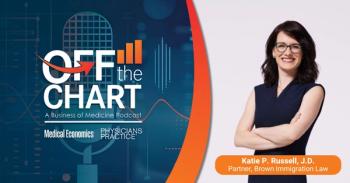
Three Ways to Boost Patient Satisfaction
A great patient experience guarantees referrals, leads to great reviews on doctor rating websites, and enhances your medical practice's brand value.
Typically, when reporting on information that is helpful to the family practice community, I report on cases from clients and former clients. However, in the most recent weeks, I personally ran into a situation that is helpful to share.
Approximately six weeks ago I was headed to a meeting when my vision became impaired. After a quick check up with my optometrist, she indicated my need for emergency surgery as I had superior lattice degeneration, or in lay terms, a detached retina.
My optometrist's passion, empathy, and desire to assist me were notable. She made an appointment with my retinal specialist, visited me in the hospital, and followed up several times. I have since referred 10 new patients to her in just the last three weeks.
Unfortunately, not all healthcare providers share the same qualities. Many think in very tactical ways upon entry into the office. They look at the calendar; they jump from patient to patient; they forget about the most important asset of the practice: the patient.
The patient experience is so vital to your future success because it guarantees referrals, leads to great reviews on websites such as Yelp and Healthgrades, and finally, develops community that provides brand value.
So what can a doctor and family practice do to ensure success?
1. Prioritize culture and attitude. Everyone in your practice must operate with the perspective of the patient in mind. Your front desk is your first line of patient interaction, so their attitude toward patients is critical.
During my recuperation from my retinal surgery I was required to look at the floor for 10 days. During that time, I had a dental hygiene appointment scheduled. I called and let the front desk know that due to surgery, I would not need my appointment for a while. Without calling to send sympathies, the front desk placed my name in a text rescheduling system and this technology starting sending me new appointments via text the following day.
Attitude is latitude and when your front desk is apathetic your patients simply leave.
2. Don't just do something because that is the way it has always been done. I was recently hired to assist a major university medical hospital in customer service. In reviewing appointments I discovered that doctors were frequently late to clinical appointments by 90 minutes. No one thought to alter the schedule.
Another example: The director of cardiology at one hospital contacted his hospital in a nonprofessional capacity when his father was having chest pains. He was placed in queue for several moments and when the clerk finally came on the line, she indicated the next possible date for the father's appointment was four weeks away. The cardiologist's father wound up having a heart attack and required an emergency visit.
Avoid issues like these at your practice by mystery shopping or mystery walking your practice. Determine what systems create unnecessary or damaging obstacles.
3. Cultivate patient relationships. Relationships go a long way. I certainly understand that you have too many patients, not enough time, and a tired and stressed staff. However, a patient relationship with your practice only lasts as long as the patient believes in the rapport he has with physicians and staff.
You and your staff can easily send thank you cards, birthday cards, and anniversary cards to patients. Or, even if it's not necessary, a brief phone call to follow up on procedures, medications, illness etc., can foster strong relationships.
A little effort goes a long way for the patient experience.
Newsletter
Optimize your practice with the Physicians Practice newsletter, offering management pearls, leadership tips, and business strategies tailored for practice administrators and physicians of any specialty.











